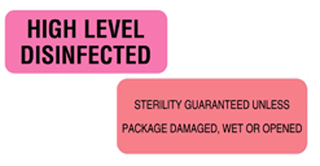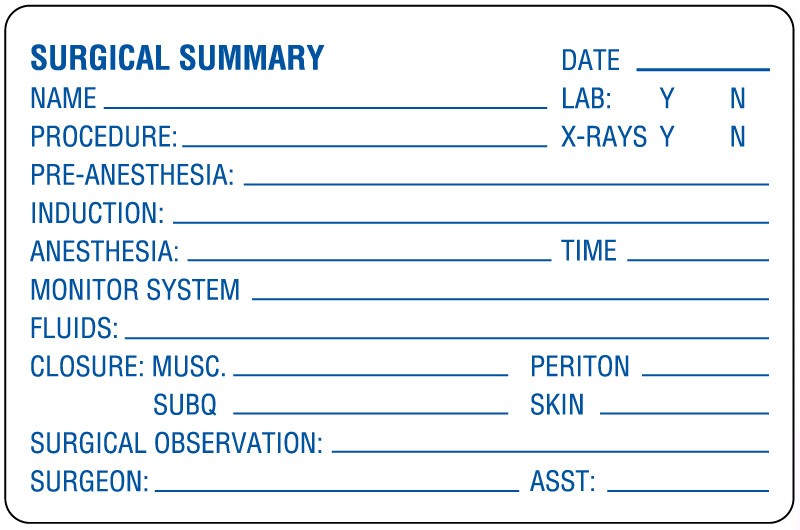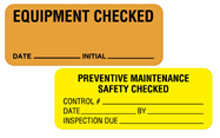Mistakes To Avoid In The OR
The fact is, careless actions don’t cause the majority of veterinary OR mistakes. Instead, they happen when a key process is overlooked or not followed diligently. Whether it’s reviewing medical records before starting surgery or taking appropriate infection prevention steps upon completion, there are common errors that even the most experienced practices make. But, these are steps you can take to avoid them.
Review Medical Records Before Surgery
Completing blood work and radiographs are a necessity before surgery. But sometimes, for all the reasons listed above, that information isn’t reviewed prior to the first incision. Further, that lack of review can cause an avoidable mistake. In addition, like most jobs, preparation makes it simpler to execute. In fact, the better you prepare before anesthesia and surgery, the more efficient you will be during the procedure.
Using a checklist in advance of surgery is a helpful tool. It allows you to scrutinize and verify each step including the anticipated drugs, anesthesia, supplies, medical equipment, and more. Reviewing the medical records and the steps you anticipate following, prior to starting the operation, will ensure a safer and better outcome.
Medication Labeling
Medication errors represent the majority of errors that occur in a veterinary practice. Although pharmaceutical advancements have led to better patient outcomes, they have also added a layer of complexity that makes following an effective process essential.
Difficult to read fill lines on vials and confusion created by look-alike sound-alike drugs are often the culprit. But, using effective medication labels that clearly define the fill line and distinguish the drug name improves dispensing accuracy.
Furthermore, when a patient requires multiple IV lines, medication mix-ups are more likely. Labels that define the IV lines, minimize the potential for confusion.
Infection Prevention
The fact is, preventing infections in any medical facility requires ongoing diligence. But, if you haven’t experienced a problem with sepsis or MRSA in the past, does it make the probability of a future problem less likely?
 Hopefully, the absence of infections indicates effective prevention techniques. But, doing things the same way you did them a few years ago may not be enough. Are bacteria levels in the OR, on IV catheter sites and surgical sites below the appropriate standard?
Hopefully, the absence of infections indicates effective prevention techniques. But, doing things the same way you did them a few years ago may not be enough. Are bacteria levels in the OR, on IV catheter sites and surgical sites below the appropriate standard?
Fortunately, there are ways to monitor your efforts. To illustrate, for items such as surgical instruments an autoclave label provides visual evidence that an item is sterile and ready for use.
Furthermore, hand washing is the primary deterrent against spreading infections. But, scrubbing prior to surgery may actually increase the rate of surgical infections. The World Health Organization recommends an alcohol-based surgical hand disinfectant instead of scrubbing before going into surgery.
Hand hygiene signs provide a visual reminder to take the appropriate safeguards.
Medical Equipment Maintenance
Treatment equipment, life support equipment, medical monitors, and more, require ongoing inspection, maintenance and calibration. For example, a faulty or dirty breathing system may result in anesthetic or oxygen going into the environment instead of the patient.
It’s important to develop a regular cleaning, maintenance and calibration routine. And, detailing those maintenance dates will help ensure the equipment works properly and alert you to a future maintenance schedule.
Labels Improve Efficiency In The Veterinary OR
On their own, veterinary labels don’t prevent a mistake from occurring in the OR. But, when used with practice protocols they communicate essential information; alerting and guiding the staff which leads to better outcomes.
United Ad Label
UAL stocks hundreds of veterinary labels that fit the needs of the OR and your entire practice. Plus, our custom veterinary labels are perfect for unique protocols or when practice-specific information is required. Both stock and custom labels are easy to order online or from our customer service team. Contact us to learn more.


